Overview (EN)
Lung cancer and mesothelioma (cancer of the lining of the chest or abdominal cavity) are diseases that largely are caused by inhalation of tobacco smoke and/ or asbestos and are very difficult to treat once they cause symptoms. Average 5-year survival rate for lung cancer is only 15% and 0-5% for mesothelioma.
Asbestos is a family of naturally occurring minerals that have been used for thousands of years in small scale, even in Finland and Norway.

With industrial production in the beginning of 1900 asbestos was widely used.
Tobacco smoke became popular early last century and since then an epidemic of lung cancer and several other lung, cardiovascular diseases and cancers appeared. There is a clear relation between smoking and lung cancer that can be visualized through following the increase in lung cancer rates 20-30 years after increased tobacco consumption.
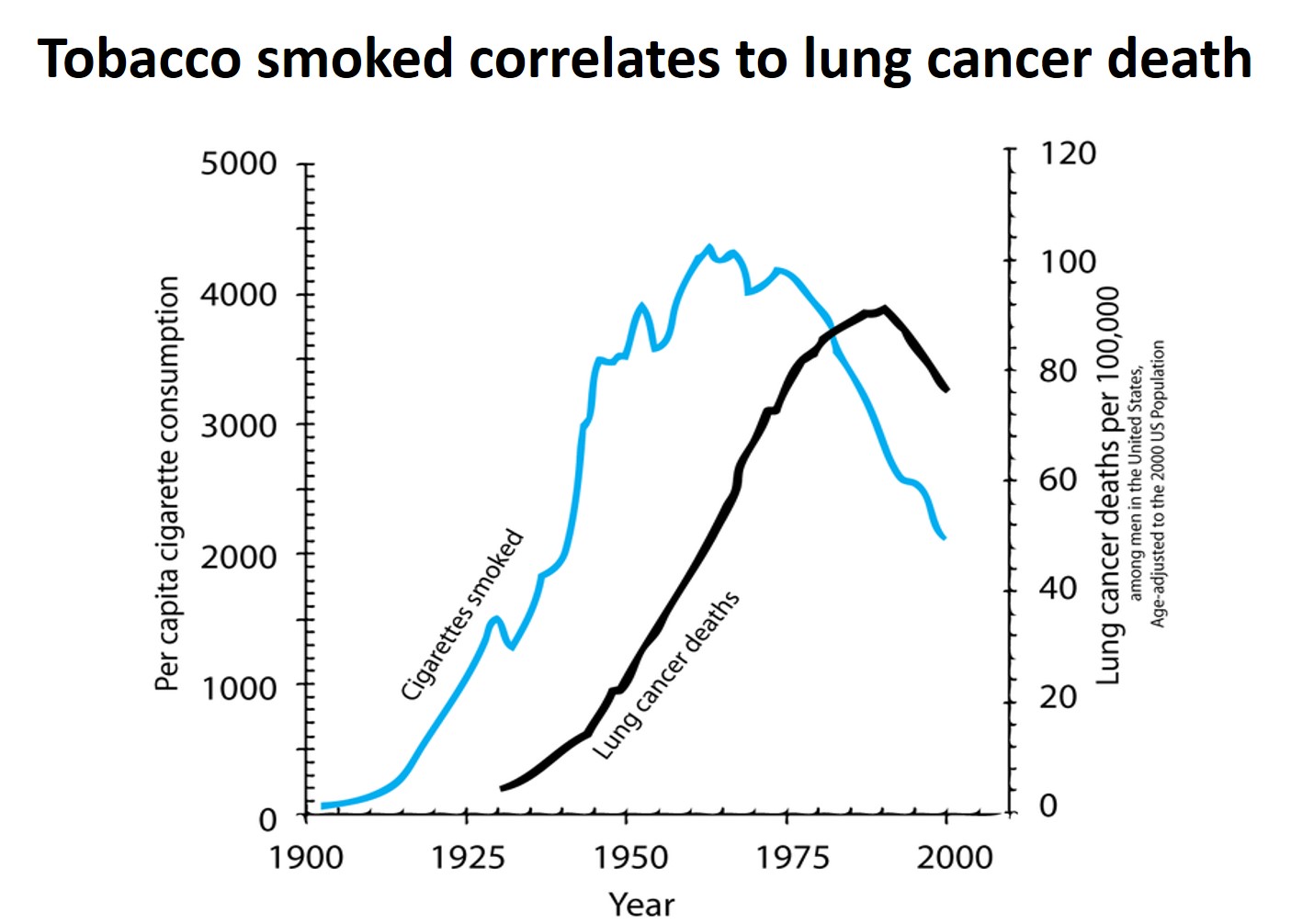
Asbestos consumption is also related to the increase in both lung cancer and mesothelioma, and the average time between asbestos inhalation and cancer is 40 years. If one see the development of asbestos consumption in the world, one will realize that these cancers will be an increasing problem for many decades to come.
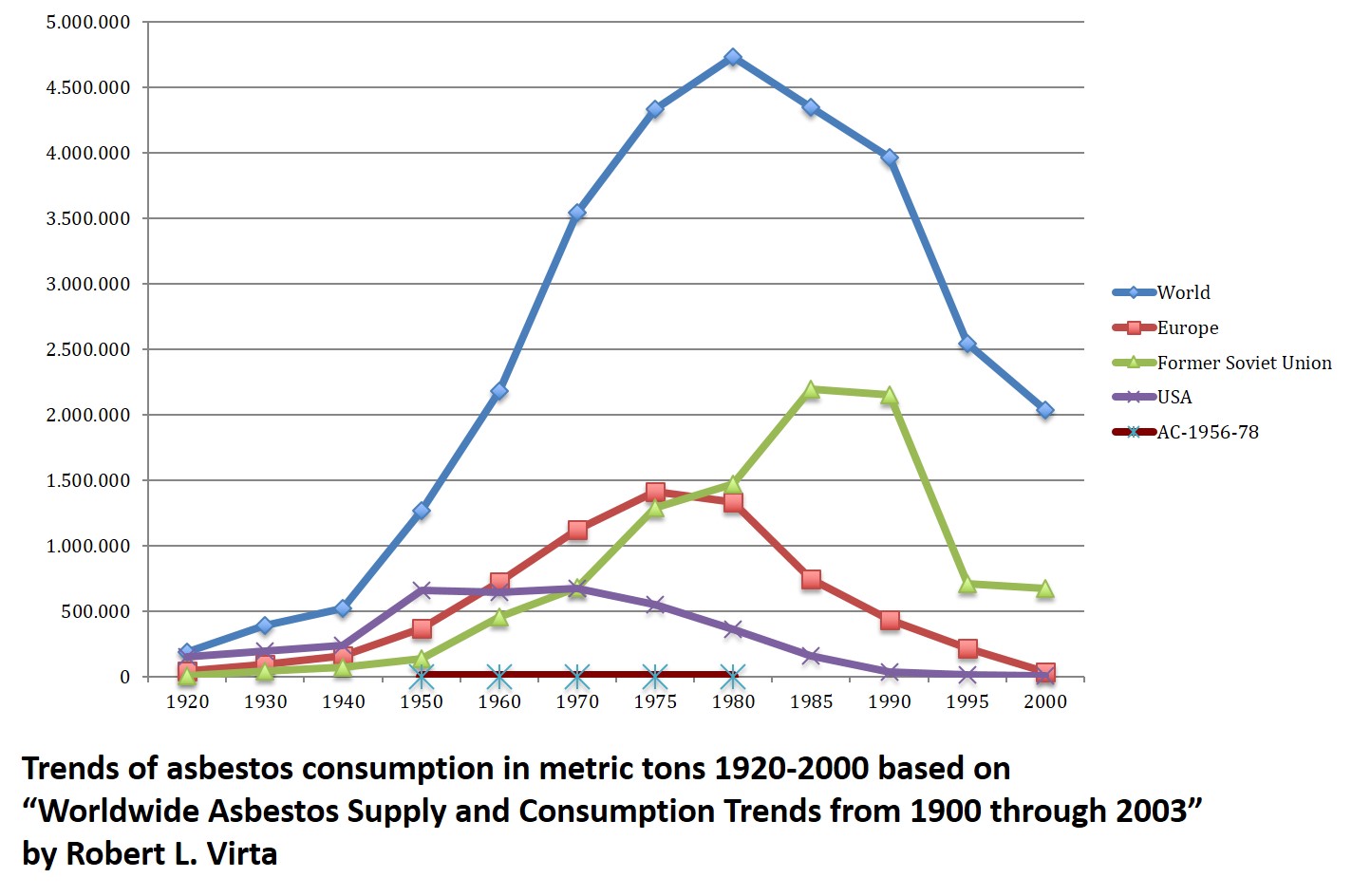
There are several products using asbestos today, for building houses, pipes and even jewellery.

Lung cancer is the cancer that currently takes most lives globally. Asbestos and tobacco-related cancer is increasing in most places in the world and will increase in the coming years as long as the use of asbestos and tobacco worldwide remains high.
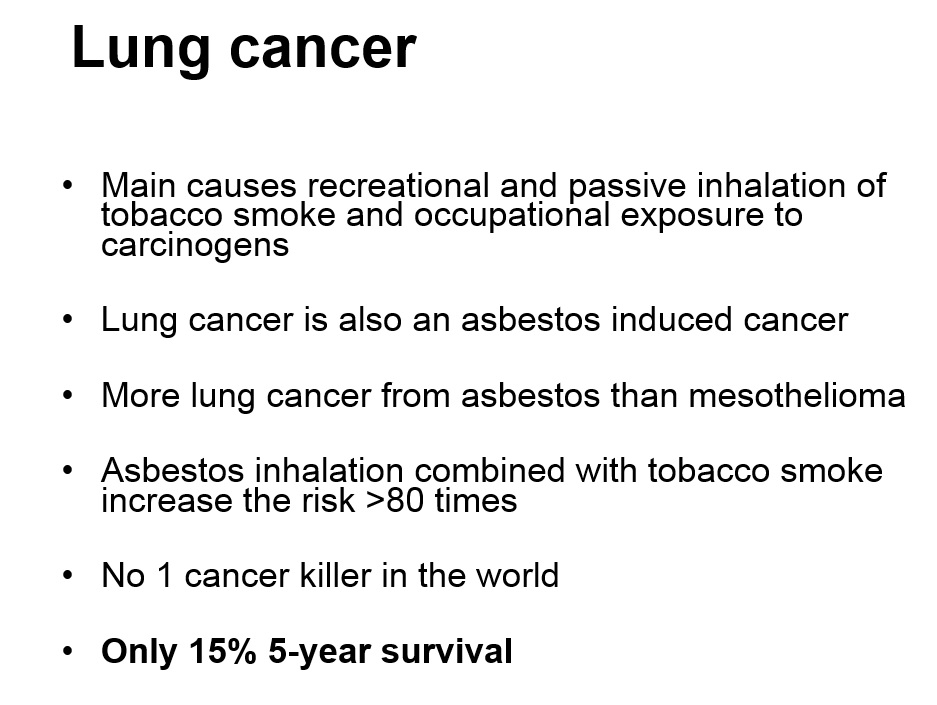
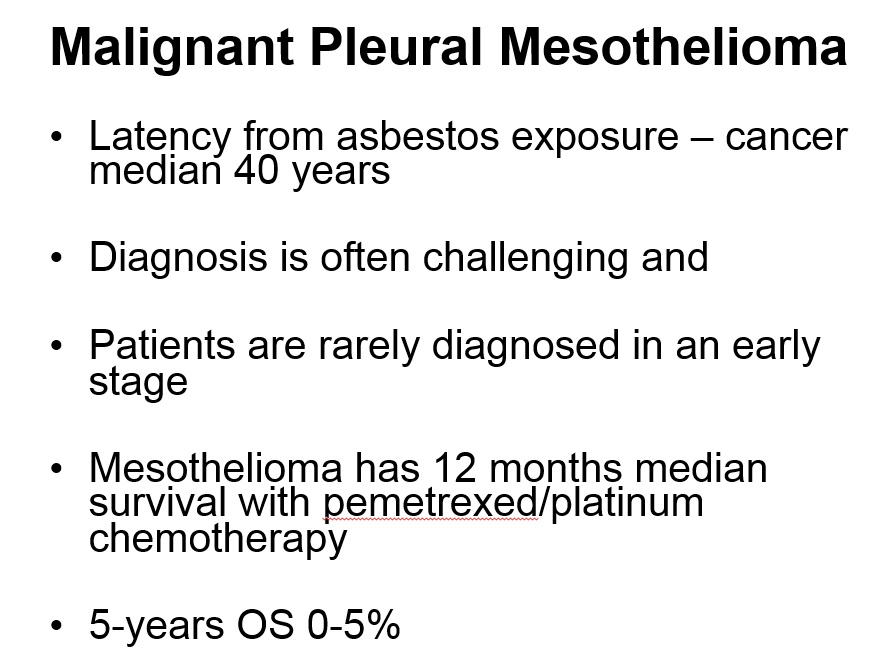
In order to change the course of these diseases early diagnosis is critical and markers to screen people for these diseases are missing. Therefore the discovery of new biomarkers for early diagnosis in blood/ serum is very important.
MicroRNAs are molecules that regulate gene expression via mRNA. In humans about 2500 different microRNA are identified and they are surprisingly stable in serum. Today it is already proven that microRNAs can be candidate markers for different cancers. For lung cancer and mesothelioma there has not been published any larger study with pre-clinical blood samples where all known microRNA are investigated. Other types of molecules have also been studied as proteins and DNA fragments. However the key problem in all studies is that the blood is from the time of diagnosis and not from the early, small tumor that may have a totally different expression of molecules.
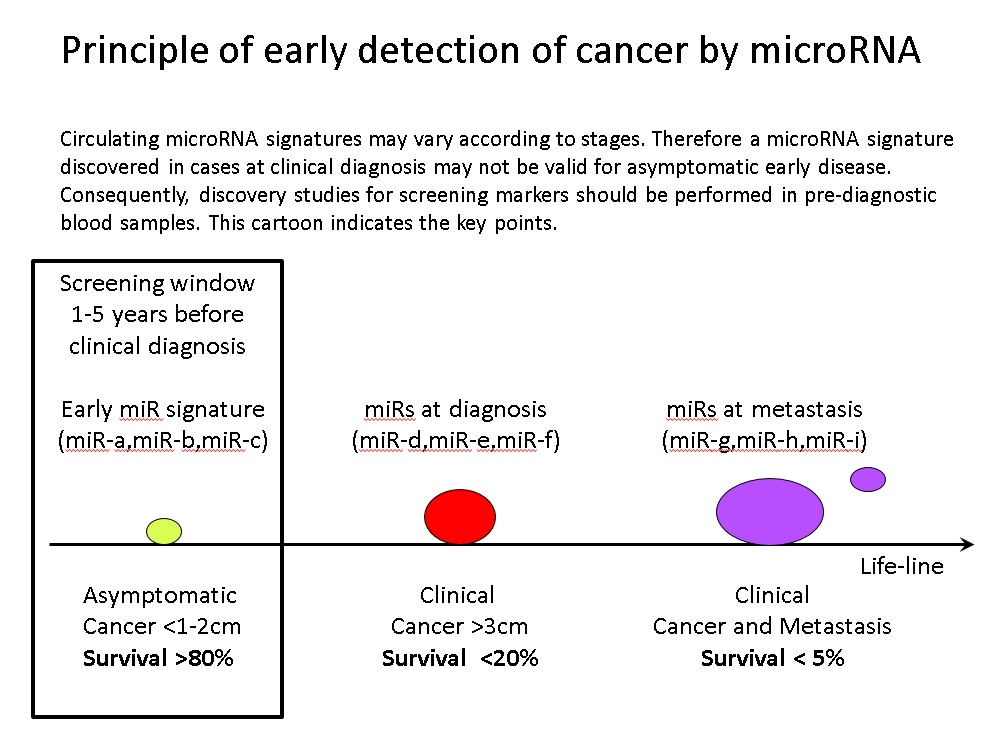
The HUNT Biobank based in Levanger, a small town in Nord-Trøndelag County in Mid-Norway, 80 km north of Trondheim, is a population-based prospective health-study, now a repository of more than 78 000 serum samples, DNA and over 600 clinical data per participant. More than 70% of the adult population participated, and we have identified more than 500 cases of lung cancer and mesothelioma that have provided blood months to 15 years before clinical cancer diagnosis. This repository is thus unique and excellent for the discovery of early stage biomarkers.
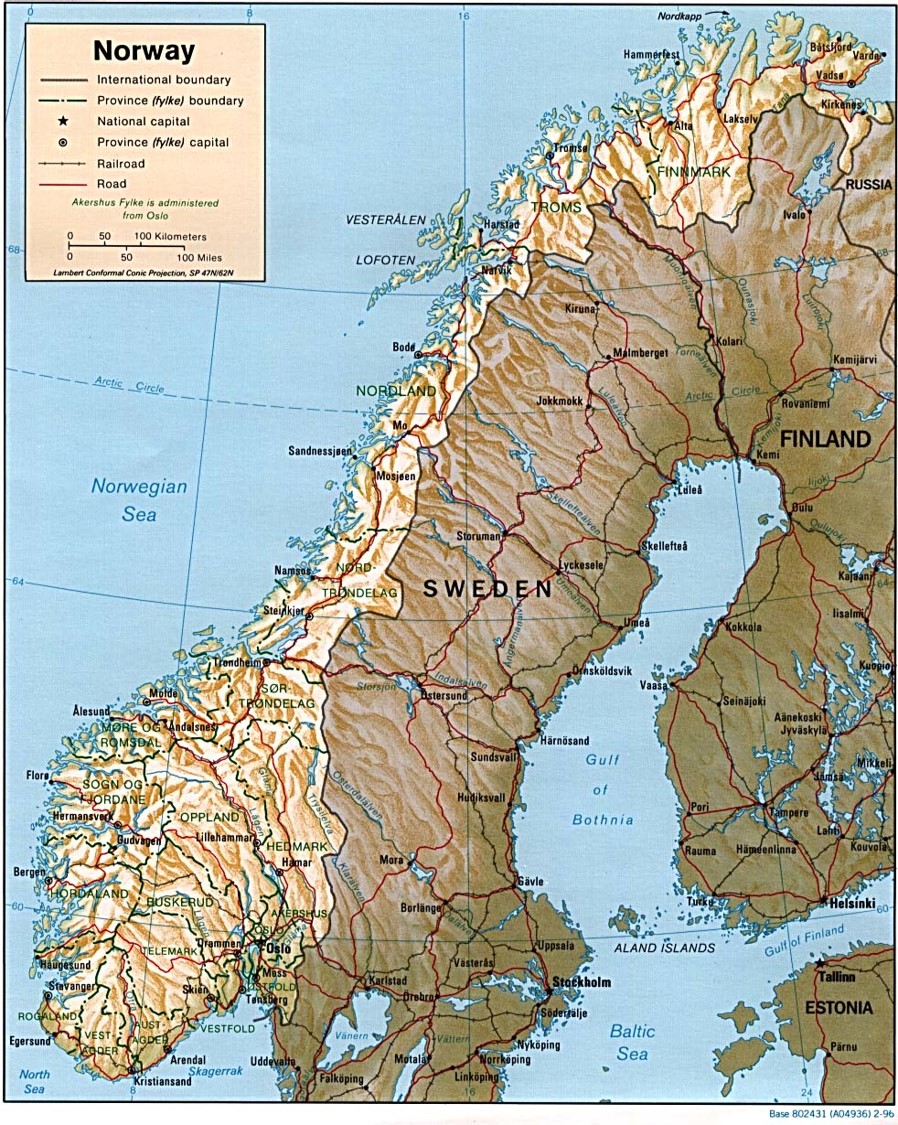
In the Cancer-Biomarker-HUNT, we compare micoRNA, protein and metabolite profiles in blood / serum taken 1-5 years before cancer diagnosis compared with those who did not get cancer. Thereby we hopefully will discover new relevant diagnostic early markers.
The project is based at the NTNU and HUNT, runs since 2013 and involves international partners at Universities in China (Nanjing), Sweden (Uppsala), Greece (Crete) and Aalborg (Denmark) as well as a private bioinformatics company, Gnosis in Creta, Greece (see more on partners).
This project and a pre-project have been funded in total with 1 million euros by the Norwegian Research Council and the Liaison Committee between the Central Norway Regional Health Authority (RHA) and the Norwegian University of Science and Technology (NTNU).
Cancer Biomarkers in HUNT” received 300.000$ additional funds from the ALCF-IASLC Joint International Fellowship Award for The Early Detection of Lung Cancer. link
Our current progress involves successful analysis of microRNA, proteins and metabolites in serum by various methods. Preliminary results have been presented in Cambridge and Cape Town in October and November 2014. In Nanjing, China, we have since 2010 cooperated closely with clinical and biological studies through the Nanjing Medical University. Biological material from lung cancer operations, blood samples and detailed medical histories as well as access to a biobank with mesothelioma samples are ready for biological assays. Moreover, a partnership with the University of Aalborg and the Aalborg University Hospital, Denmark, has been established where we have access to a biobank with several thousand lung cancer and mesothelioma samples. From Uppsala we have excellent collaborators from the Department of Pathology. The University of Crete and the Gnosis provide novel excellent bioinformatics methods.
Overview (NO)
Cancer-Biomarker-HUNT Rapport 2014 I denne internasjonale multidisiplinære studien er målet å oppdage signal-molekyler i blod for tidlig diagnostikk av lungekreft og mesotheliom.
Lungekreft og mesotheliom (kreft i bryst- eller bukhinne) er sykdommer som i høy grad skyldes inhalasjon av tobakksrøyk og/eller asbest og er meget vanskelige å behandle når de først gir symptomer. Gjennomsnittlig fem-års overlevelse for lungekreft er bare 15% og 0-5% for mesotheliom. Lungekreft er den kreftsykdommen som i dag tar flest liv globalt. Asbest- og tobakksrelatert kreft er økende de fleste steder i verden og vil øke i årene som kommer da bruken av asbest og tobakk på verdensbasis fortsatt er stor. For å kunne endre forløpet på disse sykdommene er tidlig diagnostikk av avgjørende betydning og slike markører mangler. Derfor er oppdagelsen av nye biomarkører for tidlig diagnostikk i blod/serum svært viktig.
MicroRNA er molekyler som regulerer gen-uttrykket via mRNA. Hos mennesket har man hittil påvist ca 2500 ulike microRNA og funnet at de er overraskende stabile i serum. I dag er det allerede påvist mange lovende microRNA kandidat-markører for ulike kreftsykdommer. For lungekreft og mesotheliom er det ikke publisert noen større studie med pre-kliniske blodprøver der alle kjente microRNA er undersøkt.
I dette arbeidet vil vi sammenlikne micoRNA-profilene med proteiner og metabolitter i blod/serum tatt 1-5 år før fra de som fikk kreft mot de som ikke fikk kreft og derved forhåpentligvis oppdage nye relevante tidlig-markører.
Meso-Lung HUNT er et internasjonalt tre-delt prosjekt som vil gå over flere år og som involverer nasjonale og internasjonale samarbeidspartnere ved Universiteter i Kina (Nanjing), Sverige (Uppsala), Hellas (Kreta) samt Aalborg (Danmark).
Status 2014 og plan videre 2015 Cancer-Biomarker-HUNT: Samarbeidsorganet innvilget I 2014 5,7 millioner Nok til dette prosjektet. Dette samarbeids-prosjektet med den unike biobanken HUNT har vi nå identifisert alle de som fikk lungekreft og mesotheliom samt deres kontroller. Vi har i tillegg til mikroRNA begynt å analysere protein og metabolittprofil i serum ved ulike metoder. Preliminære resultater ble presentert bla i Cambridge og Cape Town oktober og november 2014.
I Nanjing, Kina har vi siden 2010 samarbeidet tett med kliniske og biologiske studier. Det er samlet inn biologisk materiale fra lungekreft-operasjoner og tatt blodprøver samt detaljerte sykehistorier samt tilgang til en biobank medmesotheliom-prøver klare for biologiske analyser.
Videre er det etablert et samarbeide med Aalborg Universitetshospital, Danmark, der vi har tilgang til en biobank med flere tusen lungekreft og mesotheliom-prøver.
Dette samarbeidet har ført til samforfatterskap ved 10 publiserte artikler og 7 internasjonale abstract i 2014.